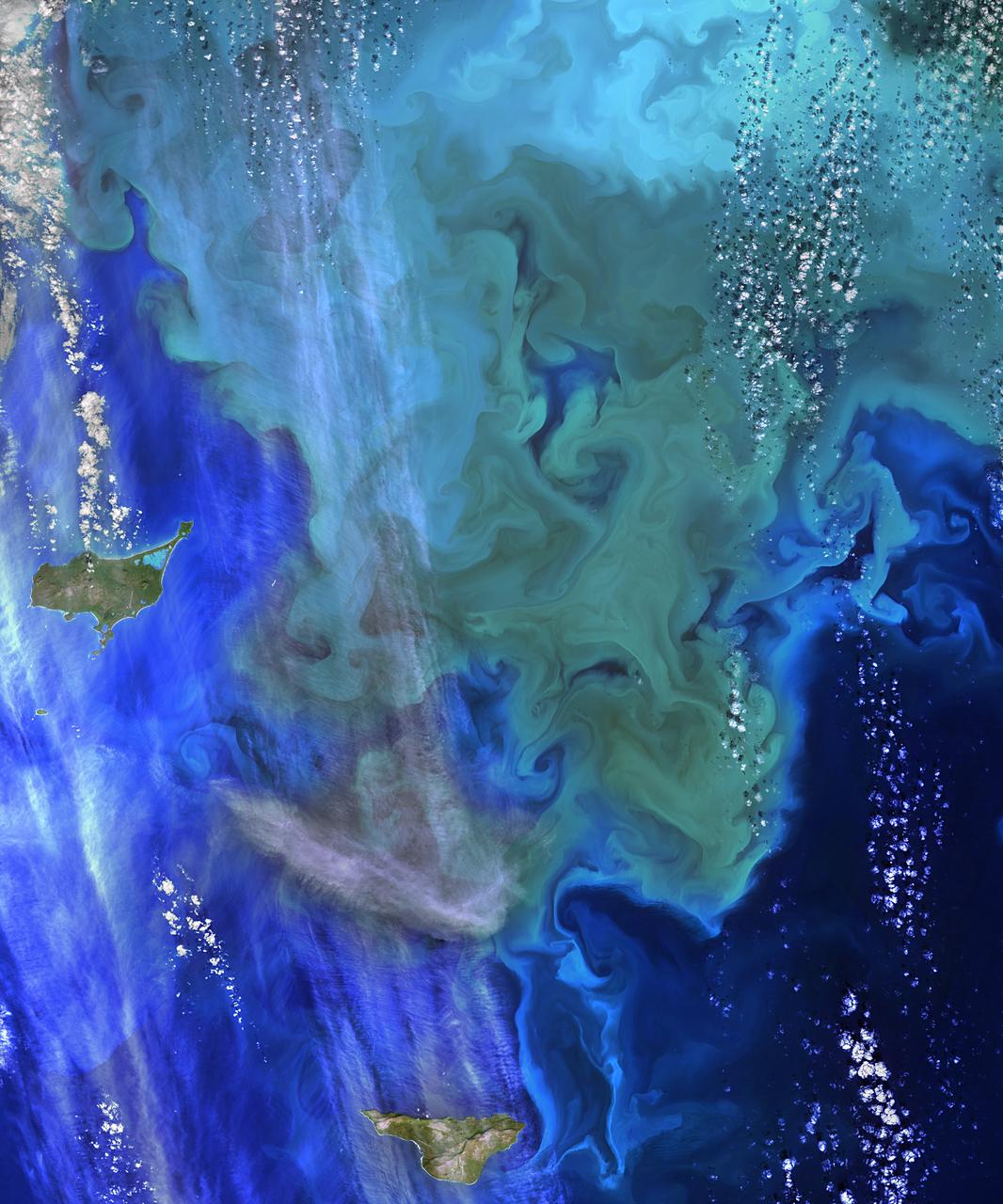
SCIENCE COOKIES
Science articles with chocolate chips
Why is the sea blue?
Published: 23/8/2021
Author: Paulina Vargas

When observing a satellite photograph of the Earth, it can be seen that most of it is covered with sea, with waters that in areas seem to be a very dark blue color, in others a bit lighter, and in certain regions even a greenish tone. But when we visit these seas in terrestrial life and hold a little of their water in our hands, we notice that it is transparent *maybe not perfectly* but definitely not blue, and yet when looking at the sea in the distance it still looks blue. Why is this? What color is the sea really? Is it just an optical illusion? And why can the seas be seen in different shades?
Colors
To understand the reason for color, first we need to understand how light works.
Objects are of a certain color due to the amount of light that they can absorb, since light is composed of the sum of all the colors that make up the visible spectrum. This light emits colors at certain wavelengths, in such a way that the materials are capable of absorbing some of them, none or even all of them, and depending on this they will reflect the colors that correspond to the wavelengths that they cannot absorb.
Thus, in order for us to observe the sea of blue color, it must absorb very high wavelengths, which correspond to red tones. And practically that is what happens; but it is not as simple as it happens with the other objects.
Colorless water?
Water is made up of hydrogen and oxygen, colorless substances, and consequently, water is also considered colorless. And even though the water of the seas is not in its pure state, since it coexists in the depths with many other substances, it is still water; water that in theory does not reflect any color.
The explanation for why seawater appears to have color is the same as the explanation for why the sky appears blue, and it is due to the Rayleigh scattering . A phenomenon that explains that when the electromagnetic waves of light collide with particles that are smaller than their wavelength, the light fragments into its different frequencies that form colors, as occurs with a prism; and such particles are capable of absorbing certain wavelengths of the spectrum.

Water molecules absorb almost all wavelengths, except for those that cause bluish tones, regardless of whether it is seawater or bottled water; Well, despite being transparent, its molecules do reflect color. The difference between one and the other is the amount of molecules that compose them, since the collisions of the light waves that cause the Rayleigh Scattering increase the thicker the object they pass through; in such a way that a bottle of water does not contain enough water for the phenomenon to be visible.
This same thickness factor causes significant differences in the tonality of seawater, since the greater the depth, the sea will acquire a more intense blue color.
Other factors
In addition to the Rayleigh dispersion phenomenon, there is a diversity of factors that promote the difference in tones in the seas. Such as pollution, the angle of incidence of the sun throughout the day, the presence of certain species of algae that can even cause pink tones in the water, among others.
One of the most influential factors in the coloration of the seas is phytoplankton, since these are marine microorganisms that contain chlorophyll, which are responsible for providing the green tones to the sea. In such a way, that the sea in a region does not always look the same tone, because like any other species, the population of phytoplankton can decrease, increase or migrate to other areas, causing significant variations in the color of seawater.

There is no doubt that the sea is one of the most impressive natural wonders on the planet. Understanding the phenomena that make it so special is almost as impressive as knowing its flora and fauna, but that is another story to tell in another scientific whim.
References
https://www.abadiadigital.com/si-el-agua-es-transparente-por-que-el-mar-es-azul/
https://www.muyinteresante.com.mx/preguntas-y-respuestas/color-azul-del-mar-se-debe-luz-no-cielo/
https://www.ngenespanol.com/ciencia/de-que-color-sera-el-mar-en-el-2100/
https://www.tiempo.com/noticias/ciencia/-por-que-el-mar-es-azul-.html
https://www.vix.com/es/btg/curiosidades/2011/07/25/por-que-el-agua-es-incolora





